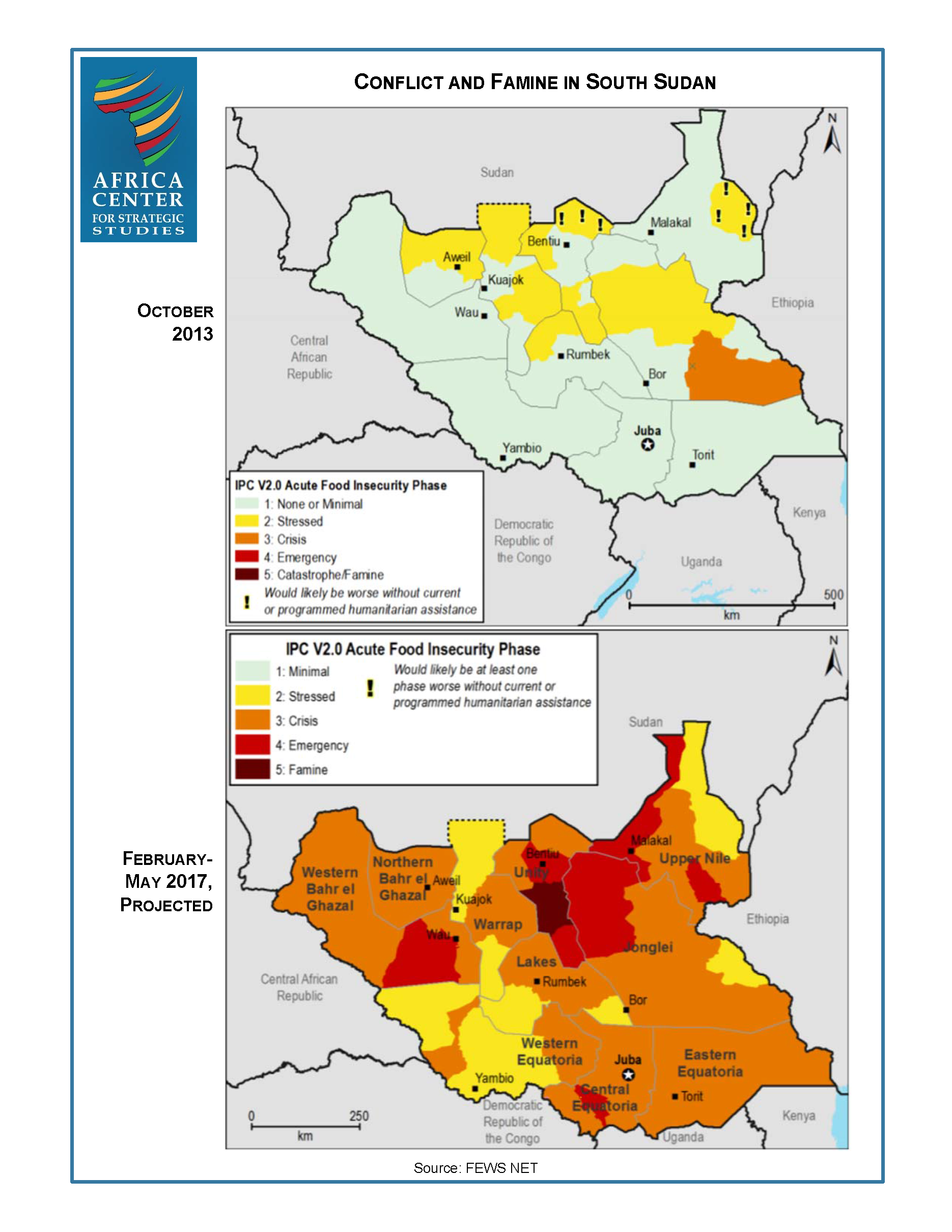 Download image as PDF
Download image as PDF
While much of East Africa suffers from severe food shortages due to a historic drought, in South Sudan, it is conflict, rather than lack of rain, that has been the cause of a widespread humanitarian disaster. Five million people are experiencing food insecurity, including at least 1 million at risk of starvation and 100,000 living in famine. The areas of greatest need overlap with the areas experiencing the most intense conflict. Intensified fighting in the past year has displaced and isolated communities, disrupted markets and farming cycles, and prevented humanitarian assistance from reaching the hardest-hit communities. Illustrative of the link between conflict and famine in South Sudan:
- The United Nations has declared a famine in two counties in Unity State, one of the key flashpoints of the conflict, where control has changed hands regularly between government and opposition forces.
- In March, violence forced aid workers to evacuate from Mayendit, Unity State—a county that had so far averted famine due to humanitarian assistance. In the absence of large-scale food aid, Mayendit and other areas are expected to descend into famine in the coming weeks.
- Food insecurity has reached emergency levels in Kajo-Keji and Yei counties in Central Equatoria. This area has historically escaped food crises due to its fertile soil and proximity to Uganda, but intense fighting and ethnically targeted killings have disrupted farming and cut off trade routes.
- With increased fighting in Northern Bahr el Ghazal, food insecurity is expected to reach emergency levels by May, despite a four-fold increase in aid between December 2015 and December 2016.
- Countrywide, aid convoys have been attacked, aid workers kidnapped and detained, and clinics and food warehouses looted by government forces. An ambush on an International Organization for Migration convoy in March 2017 resulted in the deaths of two aid workers.
Additional Resources
- Kate Almquist Knopf, “Ending South Sudan’s Civil War,” Council on Foreign Relations, November 28, 2016.
- Africa Center for Strategic Studies, “UN Commission Calls for Investigation into South Sudan Violations,” Spotlight, March 1e, 2016.
- UN Commission on Human Rights, “Statement to the 26th Special Session of the Human Rights Council,” December 14, 2016.
- Kate Almquist Knopf, “Fragility and State-Society Relations in South Sudan,” Africa Center for Strategic Studies Research Paper No. 4, September 30, 2013.
- Kate Almquist Knopf, “South Sudan: Options in Crisis,” Congressional Testimony, September 21, 2016.
- Paul Nantulya, “Getting to the Root of the South Sudan Crisis,” Africa Center for Strategic Studies Spotlight, August 1, 2016.
More on: Security and Development Stabilization of Fragile States Food Security South Sudan

